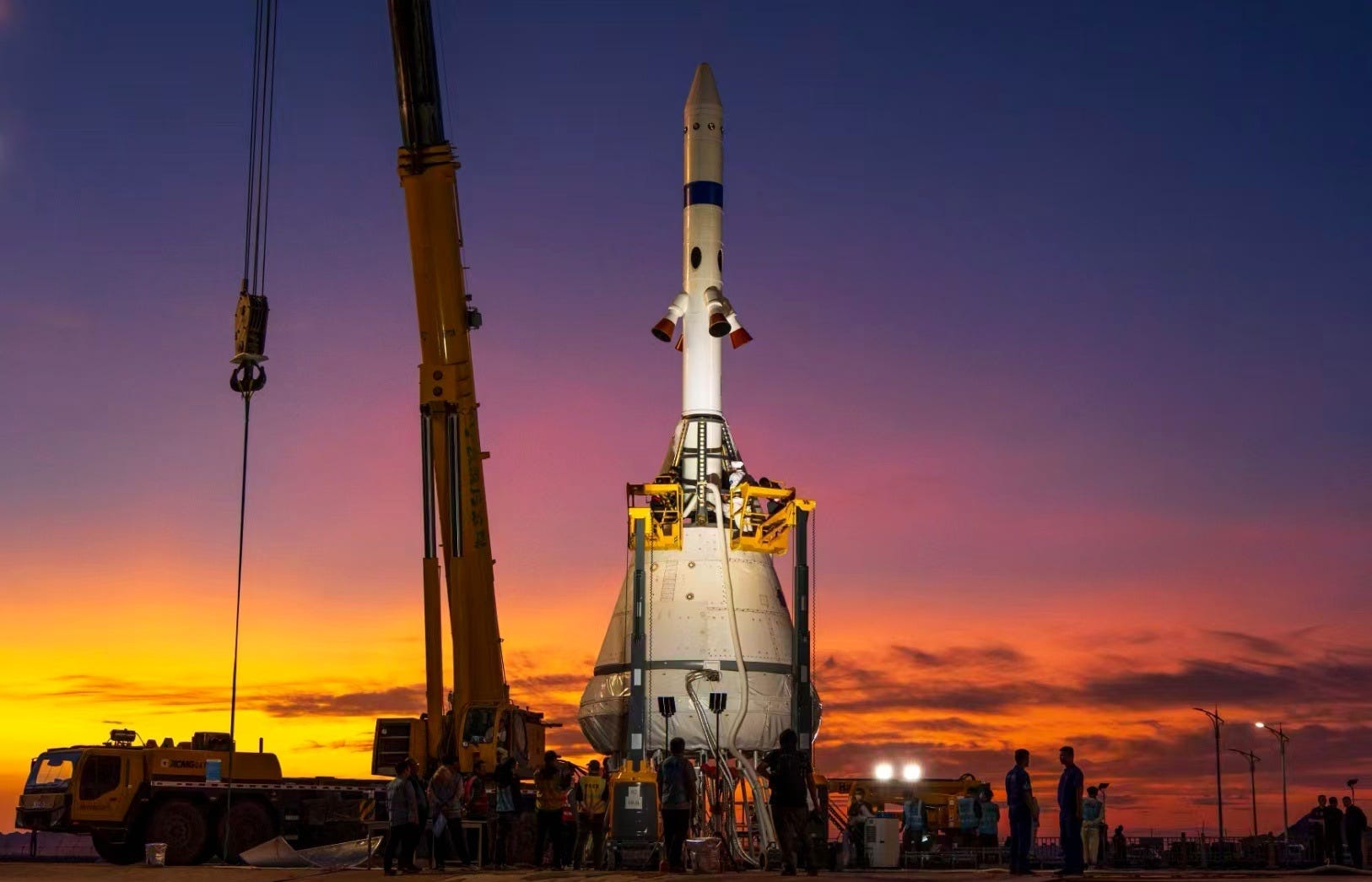Mengzhou-1, Pakistani Visitor to Tiangong Set for 2026, CMSA Details
Next year is shaping up to be a major one for China's human spaceflight efforts.
Earlier today, the China Manned Space Agency put out its ‘Announcement of the Solicitation of Logos for the 2026 Manned Spaceflight Mission’ (2026年度载人航天飞行任务标识征集活动公告), requesting patch designs for next year’s human spaceflight missions. Missions requiring logos next year include Tianzhou-10, Shenzhou-22, Shenzhou-23, and Mengzhou-1.
Within an attached document1, details for the Shenzhou-22 mission, set to launch in April 2026, state that one crew member will remain onboard the Tiangong Space Station for one year, returning with Shenzhou-23. That basically confirms, while not explicitly stating, that Pakistan’s visitor to the station will be heading up on the Shenzhou-23 mission, launching in October 2026. It is also in line with previous reports from the country, with Chinese space agency officials confirming two Pakistani candidates are in final selection.
For Pakistan’s short visit, around a week heading up on one mission (Shenzhou-23) and returning on another (Shenzhou-22), the taikonaut spending a full twelve months onboard the station will likely be someone with existing multi-mission experience in space. Possible candidates for the year-long stay will likely be a taikonaut with experience on multiple missions, so they may be:
Liu Yang (刘洋) of Shenzhou-9 and Shenzhou-14.
Wang Yaping (王亚平) of Shenzhou-10 and Shenzhou-13.
Fei Junlong (费俊龙) of Shenzhou-6 and Shenzhou-15.
Nie Haisheng (聂海胜) of Shenzhou-6, Shenzhou-10, and Shenzhou-12.
Jing Haipeng (景海鹏) of Shenzhou-7, Shenzhou-9, Shenzhou-11, and Shenzhou-16.
Liu Boming (刘伯明) of Shenzhou-7 and Shenzhou-12.
Zhai Zhigang (翟志刚) of Shenzhou-7 and Shenzhou-13.
Tang Hongbo (汤洪波) of Shenzhou-12 and Shenzhou-17.
Ye Guangfu (叶光富) of Shenzhou-13 and Shenzhou-18.
Cai Xuzhe (蔡旭哲) of Shenzhou-14 and Shenzhou-19.
Due to their recent missions to space, Chen Dong (陈冬) and Zhang Lu (张陆) will be ineligible due to post-flight readjustment and the flight assignment process. For Shenzhou missions, taikonauts are assigned at least one year in advance and can only be assigned after a two to three-month period of post-mission tests, mental, physical, and scientific, on Earth.
One of the taikonauts flying up alongside the Pakistani visitor, or receiving them in space to fly back down with them, may be from the Hong Kong and Macao Special Administrative Regions, as they are part of the regular astronaut corps, with officials saying they may fly in 2026.
Also mentioned in the attached document were some details regarding the Mengzhou-1 mission2. Stated details say that the Mengzhou (梦舟) crew capsule will launch uncrewed, atop a Long March 10A3 from Launch Complex 301 at the Wenchang Space Launch Site, and head to the Tianhe module’s Earth-facing port for docking with Tiangong, while validating spacecraft performance during flight alongside delivering and returning cargo. With the use of the Earth-facing port for Mengzhou-1, the mission may take place in November or December during the Shenzhou-23 mission, as Shenzhou-22 plans to use the same port.
Those mission details follow the China Manned Space Agency's announcement that Mengzhou, along with other vehicles for China’s crewed lunar landing program, has completed the necessary prototyping work. Back in June, the crew capsule successfully conducted a zero-altitude abort test, and the Long March 10 series has completed first and second-stage static fires. In the coming months, an in-flight abort test of the capsule will be performed.
The Long March 10A, able to lift 18,000 kilograms into low Earth orbit, is a single-stick two-stage variant of the Long March 10 Moon rocket.



